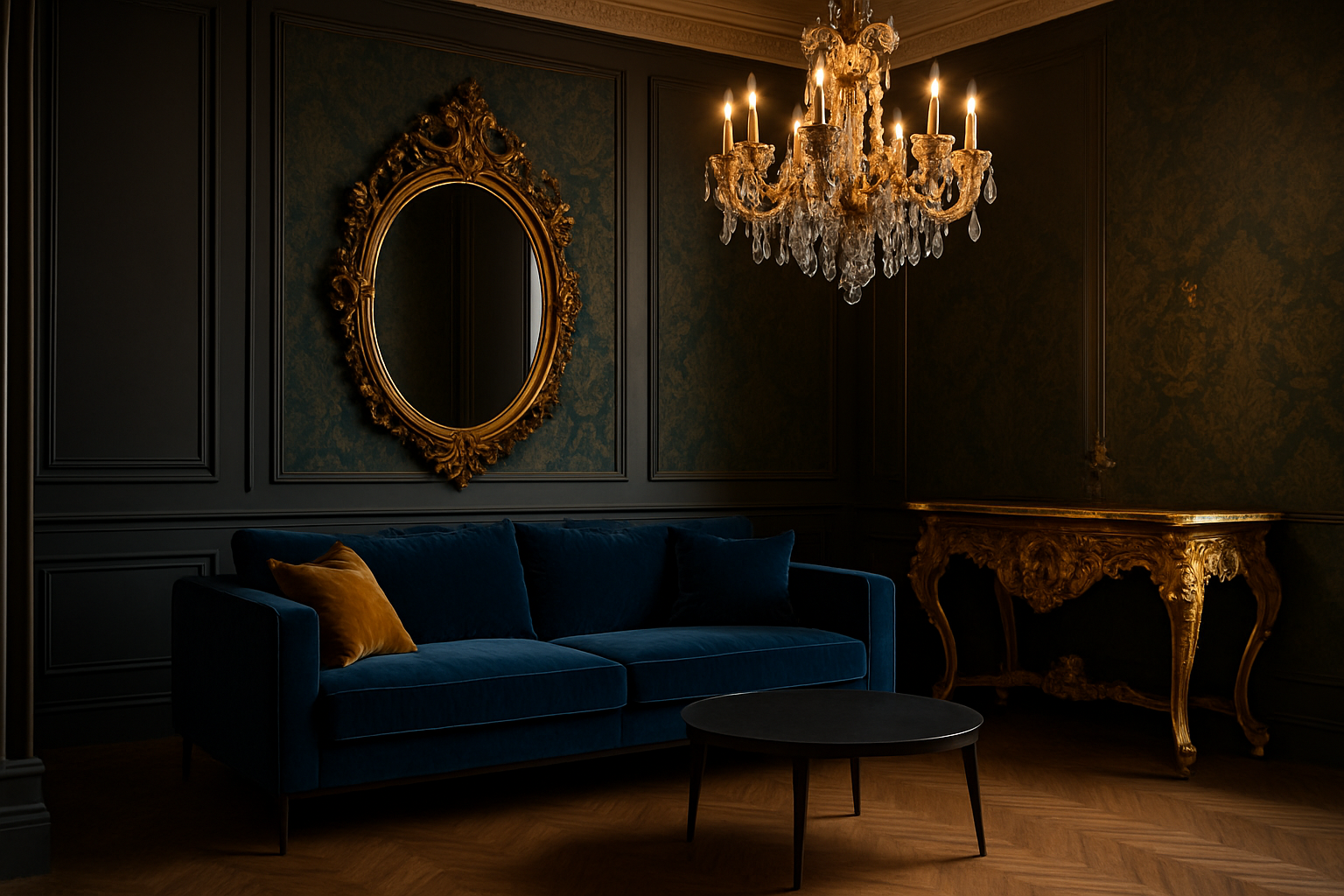Curating Timeless Elegance: The Resurgence of Regency-Inspired Design
In a world of ever-changing interior design trends, one classic style is making a remarkable comeback, captivating homeowners and designers alike. Regency-inspired design, with its timeless elegance and sophisticated charm, is experiencing a renaissance in modern homes. This revival brings a fresh perspective to traditional aesthetics, blending historical grandeur with contemporary sensibilities.

The Origins of Regency Design
Regency design originated in early 19th century England during the reign of George IV, who served as Prince Regent from 1811 to 1820. This period was characterized by a shift away from the more austere Georgian style towards a more opulent and eclectic aesthetic. Inspired by ancient Greek and Roman architecture, as well as Egyptian and Asian influences, Regency design embraced symmetry, proportion, and classical motifs.
The style was marked by the use of rich colors, exotic woods, and lavish ornamentation. Furniture pieces often featured curved lines, intricate inlays, and brass accents. Walls were adorned with elaborate plasterwork, while large windows and mirrors were used to maximize natural light and create a sense of spaciousness.
Modern Interpretations of Regency Style
Today’s Regency-inspired interiors take cues from the original style while adapting it to contemporary living. Designers are finding innovative ways to incorporate Regency elements without overwhelming modern spaces. The key lies in striking a balance between opulence and restraint, creating rooms that feel luxurious yet livable.
One approach is to focus on statement pieces that embody Regency style. A mahogany sideboard with brass hardware or a gilded mirror can serve as a focal point, adding a touch of elegance without dominating the space. These pieces can be complemented by more understated contemporary furnishings, creating an intriguing juxtaposition of old and new.
Color Palettes: From Bold to Subtle
While traditional Regency interiors often featured bold colors like deep reds, blues, and greens, modern interpretations tend to favor a more subdued palette. Soft neutrals like ivory, taupe, and pale grey provide a sophisticated backdrop for Regency-inspired elements. These muted tones allow architectural details and statement pieces to shine without overwhelming the senses.
For those seeking a bolder look, jewel tones can be incorporated through accent pieces and textiles. A rich emerald green velvet sofa or sapphire blue curtains can add depth and drama to a neutral space, echoing the luxurious feel of traditional Regency interiors.
Architectural Details: The Backbone of Regency Design
One of the most distinctive features of Regency-inspired interiors is the emphasis on architectural details. Crown moldings, wainscoting, and ornate ceiling medallions all play a crucial role in creating the refined atmosphere associated with this style. In modern homes, these elements can be added to create instant character and sophistication.
For a more subtle approach, simplified versions of these details can be incorporated. Clean-lined crown moldings or streamlined wainscoting can provide a nod to Regency style without overwhelming contemporary spaces. These architectural elements serve as a perfect backdrop for both traditional and modern furnishings, allowing for a seamless blend of styles.
Furniture Selection: Mixing Old and New
When it comes to furniture, Regency-inspired interiors offer a wealth of opportunities for creative mixing. Authentic antique pieces can be paired with contemporary items to create a curated, collected look. A traditional Regency-style chaise lounge, for example, can be complemented by sleek, modern side tables.
For those who prefer a more cohesive look, many furniture makers now offer updated versions of classic Regency pieces. These items maintain the elegant lines and proportions of the original style but are crafted with modern materials and finishes, making them more suitable for contemporary living.
Textiles and Patterns: Adding Depth and Interest
Textiles play a crucial role in Regency-inspired interiors, adding depth, comfort, and visual interest. Traditional damasks, stripes, and toile patterns can be incorporated through upholstery, drapery, and accent pieces. For a modern twist, oversized prints or abstract patterns in Regency-inspired colorways can be used to create a bold statement.
Layering different textures is another key aspect of this style. Smooth silks, plush velvets, and crisp linens can be combined to create a rich, tactile experience. These luxurious fabrics not only add visual interest but also contribute to the overall sense of opulence that is characteristic of Regency design.
Lighting: Illuminating with Elegance
Lighting is an essential element in creating the right ambiance in Regency-inspired interiors. Crystal chandeliers are a hallmark of this style, adding sparkle and grandeur to any space. In modern interpretations, oversized or uniquely shaped chandeliers can serve as striking focal points, blending traditional elegance with contemporary flair.
For a more subtle approach, wall sconces with classical details or table lamps with crystal or brass bases can be used to add touches of Regency style throughout a room. The key is to choose lighting fixtures that enhance the overall aesthetic while providing functional illumination for modern living.
Accessories: The Finishing Touches
Accessories are where the personality of Regency-inspired interiors truly shines. Traditional elements like gilt-framed mirrors, porcelain vases, and ornate clocks can be incorporated to add authenticity and charm. For a more contemporary feel, these classic pieces can be juxtaposed with modern art or sculptural objects.
Plants and flowers also play an important role in Regency-inspired design. Large potted palms or ficus trees can add a touch of exotic elegance, while arrangements of fresh flowers in classical urns bring life and color to the space.
A Timeless Style for Modern Living
The resurgence of Regency-inspired design offers a unique opportunity to create spaces that are both elegant and livable. By blending classical elements with contemporary sensibilities, this style allows homeowners to craft interiors that feel both timeless and fresh. Whether incorporated through subtle details or bold statement pieces, Regency-inspired design brings a touch of refined luxury to modern homes, proving that true elegance never goes out of style.





